- Home
- Neal Asher
The Warship
The Warship Read online
PRAISE FOR THE SOLDIER
“Neal Asher’s books are like an adrenaline shot targeted directly for the brain.”
—New York Times bestselling author John Scalzi
“With mind-blowing complexity, characters, and combat, Asher’s work continues to combine the best of advanced cybertech and military SF.”
—Publishers Weekly, Starred Review
“A richly imagined, exotic world, nonstop action, and unimaginable stakes—I couldn’t put The Soldier down.”
—Yoon Ha Lee, author of Ninefox Gambit
“Neal Asher’s coruscating mix of epic space opera, weaponised Darwinism and high-stakes intrigue channels the primal flame of deep-core science fiction.
” —Paul McAuley, author of Four Hundred Billion Stars
“The Soldier provides everything we demand from Asher: a beautifully complex universe where Als, aliens and post-humans scheme and struggle— magnificently awesome. Then Asher turns it up to eleven.”
—Peter F. Hamilton
“I had thought with the Transformation trilogy (Dark Intelligence, War Factory, Infinity Engine) that Asher had maxed out what could be done with the Polity setting—that the near-metaphysical implications of the fate of Penny Royal constituted a kind of narrative event horizon. I think I might have been mistaken.”
—Russell Letson, Locus
“In addition to elaborate space battles between gigantic warships and spectacular descriptions of technology, Asher excels at ‘humanizing’ his intelligent machines.”
—Booklist
“Neal Asher just doesn’t have the ability to write a book that doesn’t have an abundance of complex technology, diverse alien species, mind-bending science, and just flat out entertaining story lines. . . . [he] has gradually become one of the great writers of Space Opera today, right up there with the likes of Peter F. Hamilton and Alastair Reynolds.”
—Out of this World SFF Reviews
“A mind-blowing start to the Rise of the Jain trilogy. . . . takes all the best elements from the Polity universe and weaves them together into a narrative that makes it feel as if everything that came before was only meant to set up the groundwork for this moment.”
—Worlds In Ink
PRAISE FOR NEAL ASHER
“Asher is a modern master of sci-fi.”
—Starburst magazine
“Projects the terror-haunted sensibility of our time into a future of limitless brutality . . . Asher displays great virtuosity.”
—New York Times
“Incredible beings wielding vast alien technologies, devastating space battles, and mind-blowing science . . . transcends the borders of morality, existence, and spacetime itself.”
—Publishers Weekly, starred review
“A wide-screen special-effects extravaganza, a space opera featuring gods and monsters . . . Doc Smith and Olaf Stapledon in a blender, turned up to eleven, with the contents splattering across the ceiling.”
—Russell Letson, Locus
“Asher has an amazing talent for world-building, for writing larger-than-life characters, for weaving gripping plots and for imagining exotic alien races and wonderful technologies. Huge ships! Big weapons! Space battles! Ground battles! Treason! Revenge! This is New Space Opera at its best.”
—Sense of Wonder
“Violence, of course, is what Asher does best—by presenting a stunning, brutal spectacle and taking his readers right into the middle of it. He expertly ratchets up the narrative tension and excitement with high-tech mayhem and technological razzle-dazzle. And it’s a genuine pleasure to watch him.”
—Kirkus Reviews
“The multifaceted, complex storytelling rewards a dedicated reader with serious tension and mindblowing sci-fi thrills.”
—Manhattan Book Review
“In all Neal Asher novels the main attractions . . . are great world building with both technological marvels and weird creatures, fast paced, nononsense action and . . . the outstanding cast of characters.”
—Fantasy Book Critic
“Exciting, intricate, and unabashedly futuristic . . . space opera filled with [Asher’s] trademark technological marvels and elaborate world building.”
—Booklist
“Blends large portions of horror and mystery into an SF tale of revenge and redemption . . . a complex and satisfying work.”
—Library Journal, starred review
“Hardboiled, fast-paced space opera ... Asher’s books are similar to the world of Iain M. Banks’ Culture universe, but the Polity is arguably a much darker and more vicious environment—and all the better for it.”
—The Register
“[The Polity books] are SF novels that mix early cyberpunk’s insouciance with the widescreen baroque spectacle of space opera and the pacing of an airport action-thriller.”
—SFX
“A dark future universe full of vibrant spaceships, people, creatures and intelligence. Highly enjoyable and highly addictive, Asher has a new fan.”
—SF Book Reviews
“Space opera that is entertaining, slick, sometimes even jaw-dropping . . . pretty hard to beat.”
—Infinity Plus
BOOKS BY NEAL ASHER
AGENT CORMAC
Gridlinked (2001)
The Line of Polity (2003)
Brass Man (2005)
Polity Agent (2006)
Line War (2008)
SPATTERJAY
The Skinner (2002)
The Voyage of the Sable Keech (2006)
Orbus (2009)
NOVELS OF THE POLITY
Shadow of the Scorpion (2008)
Prador Moon (2006)
Hilldiggers (2007)
The Technician (2010)
TRANSFORMATION
Dark Intelligence (2015)
War Factory (2016)
Infinity Engine (2017)
RISE OF THE JAIN
The Soldier (2018)
The Warship (2019)
THE OWNER
The Departure (2011)
Zero Point (2012)
Jupiter War (2013)
SHORT-STORY
COLLECTIONS
Runcible Tales (1999)
The Engineer (1998)
The Gabble (2008)
NOVELLAS
The Parasite (1996)
Mindgames: Fool’s Mate (1992)
Cowl (2004)
THE
WARSHIP
RISE OF THE JAIN BOOK TWO
NEAL
ASHER
Night Shade Books
New York
Copyright © 2019 by Neal Asher
First Night Shade Books edition published 2019
Published in the United Kingdom by Tor, an imprint of Pan Macmillan, a division of Macmillan Publishers Limited.
All Rights Reserved. No part of this book may be reproduced in any manner without the express written consent of the publisher, except in the case of brief excerpts in critical reviews or articles. All inquiries should be addressed to Night Shade Books, 307 West 36th Street, 11th Floor, New York, NY 10018.
Night Shade Books® is an imprint of Start Science Fiction LLC.
Visit our website at www.nightshadebooks.com.
10 9 8 7 6 5 4 3 2 1
Library of Congress Cataloging-in-Publication Data
Names: Asher, Neal L., 1961- author.
Title: The warship / Neal Asher.
Description: First Night Shade Books edition. | New York : Night Shade Books,2019. | Series: Rise of the Jain ; book 2
Identifiers: LCCN 2018054669 | ISBN 9781597809900 (hardback)
Subjects: | BISAC: FICTION / Science Fiction / Adventure. | FICTION / Science Fiction / Space Opera. | FICTION / Science Fiction / General. | GSAFD: Science fi
ction.
Classification: LCC PR6101.S54 W38 2019 | DDC 823/.92--dc23
LC record available at https://lccn.loc.gov/2018054669
eISBN: 978-1-59780-641-1
Cover artwork by Adam Burn
Cover design by Claudia Noble
Printed in the United States of America
For Elon Musk, who, with SpaceX, is making an effort to give us the planets. Also for Jeff Bezos, Richard Branson and all those other private- sector lunatics with similar goals in mind. You go guys—ignore the naysayers!
ACKNOWLEDGEMENTS
Many thanks to those who have helped bring this novel to your e-reader, smartphone, computer screen and to that old-fashioned mass of wood pulp called a book. At Macmillan these include: Bella Pagan (editor), Kate Tolley (desk editor), Georgia Summers (editorial assistant), Neil Lang (jacket designer), Don Shanahan (comms), Rosie Wilson (comms); also freelancers Claire Baldwin (editor) and Steve Stone (jacket illustrator), and others whose names I simply don’t know. At Night Shade Books these include Cory Allyn and Oren Eades (editorial), Joshua Barnaby (production), and freelancers Adam Burn (art) and Claudia Noble (design).
CAST OF CHARACTERS
Angel: A Golem android, originally named “legate” by its creator, the rogue AI Erebus and enemy of the Polity. When his master and creator died, Angel’s empty mind was searching for new purpose and became enslaved to the shadowy Wheel, thought to be a Jain AI. Directed by the Wheel, Angel travelled to the Cyberat system, where he triggered the release of a highly dangerous piece of Jain tech from a notorious cyborg’s stash. This became the Soldier, which went on to attack the defence sphere around the accretion disc. No longer useful, Angel was abandoned by its wormship and the Wheel in the Cyberat system. There the alien entity Dragon took in the badly wounded android and revived him, creating a link between them. Angel has now swapped sides and made an alliance with Captain Cog, travelling with him on his ship. But there are other crew on board who still can’t forgive Angel his past.
Brogus: A prador father-captain who fled the prador kingdom after the truce with the Polity, because he did not agree with it. Later he was recruited then enslaved by Angel, under the influence of the Jain AI the Wheel, and put in charge of a prador ship for purposes yet to be revealed.
Captain Cogulus: A centuries-old captain from the world of Spatterjay, known by most as Cog. Just like other humans of that world, he is a hooper, the term used to describe those infected by the Spatterjay virus. Cog is also related to the founder of that world, the infamous pirate Jay Hoop. What many people don’t know is that Cog is also an agent for the Polity. Cog initially set out to help another hooper, Trike, rescue his wife, who had been kidnapped by the legate Angel. This drew him to the Cyberat system, from where they barely escaped alive. They were then attacked by the swarm AI the Clade and his ship badly damaged. Dragon took them in, and they could shelter within his vast structure.
The Client: An expert weapons developer and the last remaining creature of a civilization called the Species. Her kind were supposedly annihilated centuries ago by the alien prador. The Client, bent on revenge, took over a weapons platform from the defence sphere and travelled to her old home planet now in the Prador Kingdom. There she discovered a hidden library on a moon, holding a treasure trove of data stores, and guarded by the Librarian. The Client’s battle with this ancient Jain unlocked the forbidden data she was seeking and finally revealed to her what happened to her kind.
Dragon: A moon-sized alien biomech who is Orlandine’s partner in her project to build the accretion disc defence sphere. Its motives and aims are often opaque, but it is certain that it has a hatred for the Jain technology within that disc.
Orlandine: The haiman overseer of the defence sphere project. Orlandine controls all the AIs and state-of-the-art weapons platforms that surround and guard the accretion disc, looking to contain the lethal concentration of Jain technology gathered there. She is made up of a complex mix of human, AI and Jain tech herself. When the disc was attacked by an impossibly powerful Jain soldier, seemingly to release the Jain tech, she was forced to launch her “special project.” This involved transporting a black hole, via U-space, to the accretion disc, where it could halt the spread of Jain tech once and for all. However, the nature of the accretion disc, and the effects the black hole may have on it, are now worryingly unclear.
Trike: Like Cog, Trike is a hooper, with the characteristic size and strength of such men from the Spatterjay world. Trike also displays signs of insanity, which the Spatterjay virus feeds and enhances if not kept under control. Trike’s wife, Ruth, would help calm Trike and keep the madness at bay. When Ruth was kidnapped and enslaved by the legate Angel, Trike was drawn into the wider battle against this android and the Wheel. He and Ruth were finally reunited and escaped the Cyberat world together but a fatal attack by the Clade on their ship resulted in Ruth’s death.
GLOSSARY
Augmented: To be “augmented” is to have taken advantage of one or more of the many available cybernetic devices, mechanical additions and, distinctly, cerebral augmentations. In the last case we have, of course, the ubiquitous “aug” and such back-formations as “auged,” “auging-in,” and the execrable “all auged up.” But it does not stop there: the word “aug” has now become confused with auger and augur—which is understandable considering the way an aug connects and the information that then becomes available. So now you can “auger” information from the AI net, and a prediction made by an aug prognostic subprogram can be called an augury.
—From Quince Guide, compiled by humans
Bounce gate: A small defensive runcible (U-space gate) installed aboard ships as a countermeasure to U-space missiles. Such missiles can be fired through U-space at a ship and materialize inside it; however, if they appear near a gate, it is the nature of the physics of this technology that the gate will route them through to U-space.
The Clade: It consists of thousands of drones each possessing the head of a polished steel axolotl and a body like a chrome-plated dinosaur spine, each being autonomous but also a component of a swarm AI. The drones were originally made during the Polity war against the prador to penetrate prador war machines and take control of them. But something happened post-production that caused them to hive together as a single, psychotic entity, which named itself the Clade.
First- and second-children: Male prador, chemically maintained in adolescence and enslaved by pheromones emitted by their fathers and acting as crew on their ships or as soldiers. Prador adults also use their surgically removed ganglions (brains) as navigational computers in their ships and to control war machines.
Golem: Androids produced by the Cybercorp company—consisting of a ceramal chassis usually enclosed in syntheflesh and syntheskin outer layers. These humanoid robots are very tough, fast and, since they possess AI, very smart.
Haiman: The closest amalgam of human and AI possible without the destruction of the human organic brain. The haiman Orlandine is a special case, since she has also amalgamated with Jain tech she made “safe.”
Hardfield: A flat force field capable of stopping missiles and energy beams. The impact or heat energy is transformed and dissipated by its projector. Overload of that projector usually results in its catastrophic breakdown, at which point it is ejected from the vessel containing it. Hardfields of any other format were supposed to be impossible, however it has now been revealed that they can be made spherical and almost impenetrable . . .
Hooper: A human from the oceanic world of Spatterjay who has been infected with the Spatterjay virus. Commonly passed on through a leech bite, this virus makes its target inhumanly strong, dangerous and long-living.
Jain technology: A technology spanning all scientific disciplines, created by one of the dead races—the Jain. Its apparent sum purpose is to spread through civilizations and annihilate them.
Nanosuite: A suite of nano-machines most human beings have inside them. These self-propagating machines act as a s
econdary immune system, repairing and adjusting the body. Each suite can be altered to suit the individual and his or her circumstances.
Polity: A human/AI dominion extending across many star systems, occupying a spherical space spanning the thickness of the galaxy and centred on Earth. It is ruled over by the AIs who took control of human affairs in what has been called, because of its very low casualty rate, the Quiet War. The top AI is called Earth Central (EC) and resides in a building on the shore of Lake Geneva, while planetary AIs, lower down in the hierarchy, rule over other worlds. The Polity is a highly technical civilization but its weakness was its reliance on travel by “runcible’—instantaneous matter transmission gates.
Prador: A highly xenophobic race of giant crablike aliens ruled by a king and his family. Hostility is implicit in their biology and, upon encountering the Polity, they immediately attacked it. They originally had an advantage in the prador/human war in that they did not use runcibles (such devices needed the intelligence of AIs to control them and the prador are also hostile to any form of artificial intelligence) and as a result had developed their spaceship technology, and the metallurgy involved, beyond that of the Polity. They attacked with near-indestructible ships, but in the end the humans and AIs adapted, their war factories out-manufactured the prador and they began to win. They did not complete the victory, however, because the old king was usurped and the new king made an uneasy peace with the Polity.
Reaver: A huge golden ship shaped like an extended teardrop and one of the feared vessels of the prador King’s Guard.
Runcible: Instantaneous matter transmission gates, allowing transportation through underspace.
USER: Underspace interference emitters are devices that disrupt U-space, thereby stopping or hindering both travel and communication through that continuum. They can also force ships out of it into the real, or realspace. They can consist of ship-mounted weapons, mines and missiles whose duration of disruption is variable.
U-signature: A detectable signature left when a ship jumps into or out of U-space from which the destination or departure point of the ship can be divined. Complex matter when artificially organized down to the pico- scopic level also creates a U-signature, by which it can be identified.

 The Bosch: A Novella (Polity Universe)
The Bosch: A Novella (Polity Universe)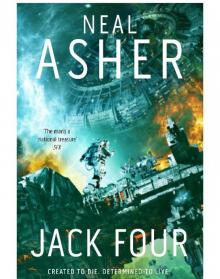 Jack Four
Jack Four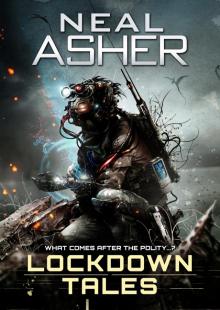 Lockdown Tales
Lockdown Tales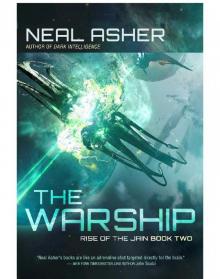 The Warship
The Warship Line War
Line War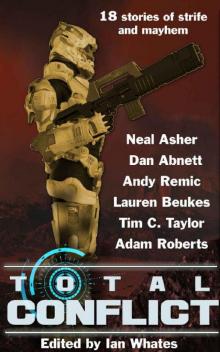 Total Conflict
Total Conflict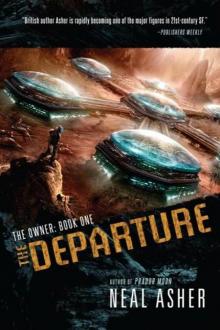 The Departure
The Departure Owner 03 - Jupiter War
Owner 03 - Jupiter War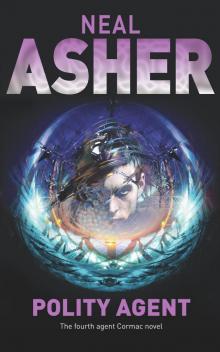 Polity Agent
Polity Agent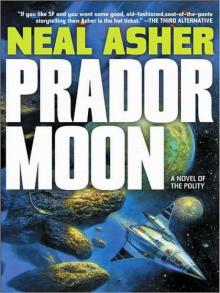 Prador Moon
Prador Moon The Technician
The Technician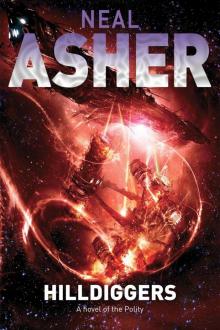 Hilldiggers
Hilldiggers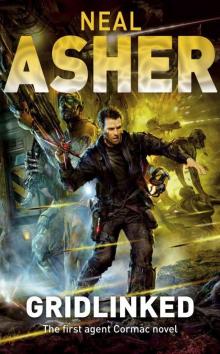 Gridlinked
Gridlinked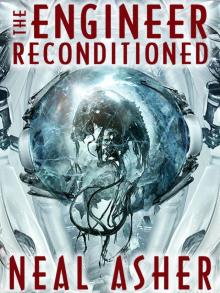 The Engineer ReConditioned
The Engineer ReConditioned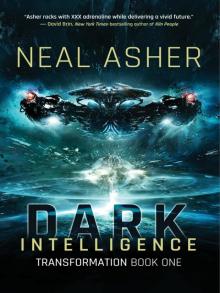 Dark Intelligence
Dark Intelligence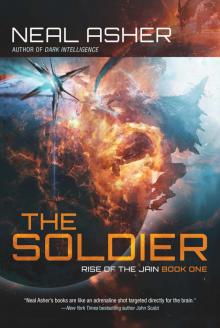 The Soldier: Rise of the Jain, Book One
The Soldier: Rise of the Jain, Book One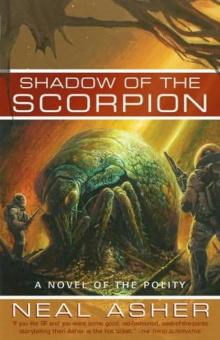 Shadow of the Scorpion p-2
Shadow of the Scorpion p-2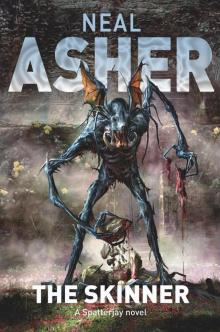 The Skinner
The Skinner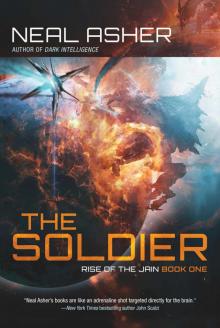 The Soldier
The Soldier The Gabble p-13
The Gabble p-13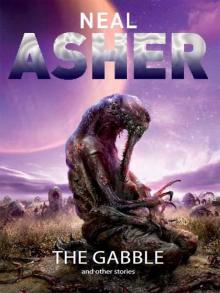 The Gabble and Other Stories
The Gabble and Other Stories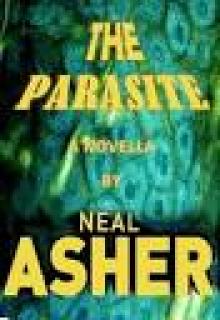 The Parasite
The Parasite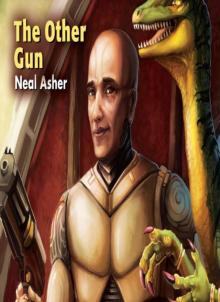 The Other Gun
The Other Gun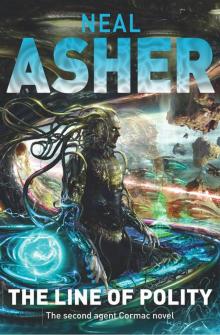 The Line of Polity
The Line of Polity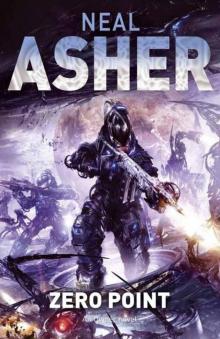 Zero Point (Owner Trilogy 2)
Zero Point (Owner Trilogy 2)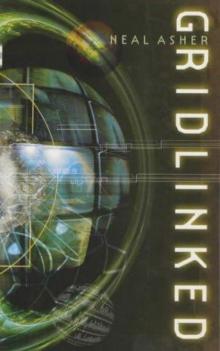 Gridlinked ac-1
Gridlinked ac-1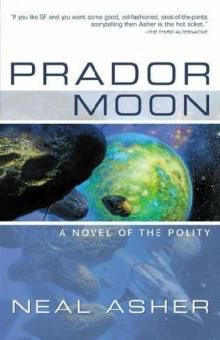 Prador Moon p-1
Prador Moon p-1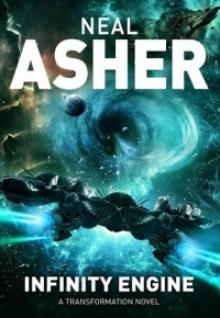 Infinity Engine
Infinity Engine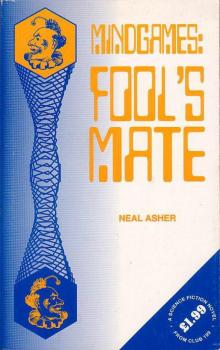 Mindgames: Fool's Mate
Mindgames: Fool's Mate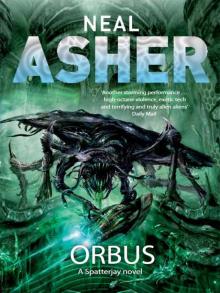 Orbus
Orbus Africa Zero
Africa Zero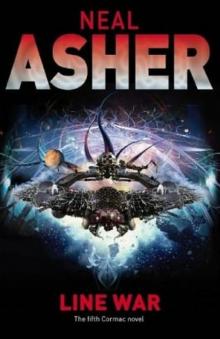 Line War ac-5
Line War ac-5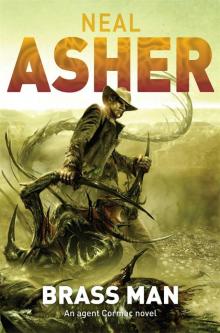 Brass Man
Brass Man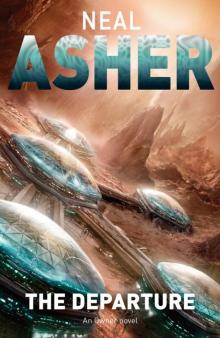 The Departure to-1
The Departure to-1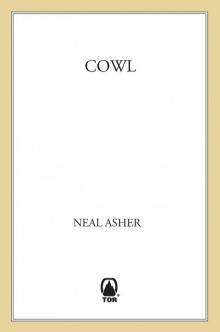 Cowl
Cowl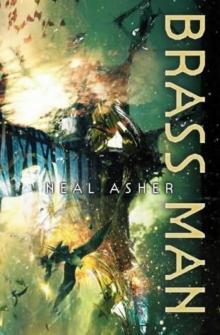 Brass Man ac-3
Brass Man ac-3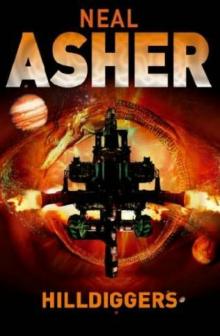 Hilldiggers (polity)
Hilldiggers (polity)![Greg Bear - [Eon Trilogy 1] - Eon (rescan) (v1.0) Read online](http://i1.bookreadfree.com/i2/04/08/greg_bear_-_eon_trilogy_1_-_eon_rescan_v1_0_preview.jpg) Greg Bear - [Eon Trilogy 1] - Eon (rescan) (v1.0)
Greg Bear - [Eon Trilogy 1] - Eon (rescan) (v1.0)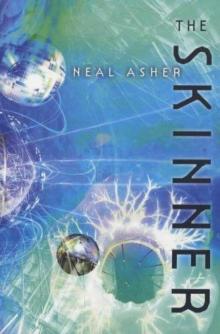 The Skinner s-1
The Skinner s-1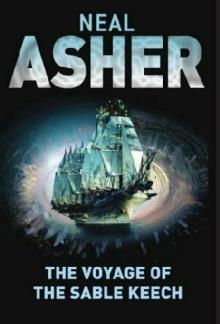 The Voyage of the Sable Keech s-2
The Voyage of the Sable Keech s-2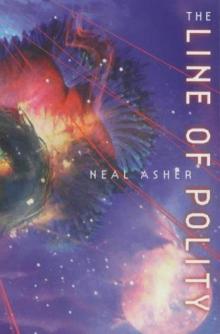 The Line of Polity ac-2
The Line of Polity ac-2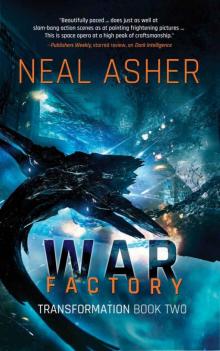 War Factory: Transformations Book Two
War Factory: Transformations Book Two Polity Agent ac-4
Polity Agent ac-4